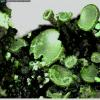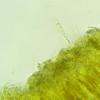
23-09-2024 17:24
Karen PoulsenHi there, I found a few very small apothecia on o

24-09-2024 18:27
Pierre-Yves JulienRécolte le 01/09/2024 – Paris (75) – France �

25-09-2024 20:07
François BartholomeeusenAfter I dipped a fallen Ilex leaf in water for a d

06-07-2020 05:51
 Yulia Lytvynenko
Yulia Lytvynenko
Dear friends.Looking for a copy of the following w

06-09-2024 16:23
 Andgelo Mombert
Andgelo Mombert
Bonjour,J'ai trouvé cette semaine Caesiodiscus po

19-09-2024 10:15
 YI-SIOU CHEN
YI-SIOU CHEN
Hello,I am a master's student in Taiwan, and my re

I agree that the Dinolite image renders the fungus in too light a shade, though I did already tweak it somewhat to improve it from the initial.
This was found by a 7 year old who was also with us on our NW Fungus Group foray, on Sunday 15th October; in a very rotten stump, probably Betula or Quercus.
The site is a Lancashire Wildlife Trust Reserve called Mere Sands Wood north of Liverpool.
The UK GR is SD 4470 1570, which is equivalent to Long. - 6.953; lat. 49.936.
I had kept some of the specimen for the time being. ..... ?
Kind regards,
John Watt

Sorry, I used the Brit Geol converter but forgot that on our usual OS maps the first digit is not shown in large type, so you're quite right with your Long and Latitude. Instead of that first numeral, the OS National Grid systems divides the country up into 100km grids which each have two identifying letters (SD in this case) to complement that first numeral.
I have had a good look at the fragment of wood and it does look like Quercus (robur likely).
The finder was young James Roberts (8 yr) .
Thanks also for pointing out the Anamorph. I can have a look at that next time the microscope is out.





